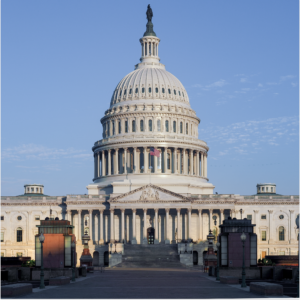16-year-old Klara Hammudeh explains what Trump’s victory means for US politics

In addition to Trump's presidential victory, Republicans hold a majority in the Senate, House of Representatives and Supreme Court.
November 12, 2024
America votes! How has the election changed checks and balances in the US?
On November 5, 2024, not only the president of the United States but also several other federal officials were elected: 34 seats in the Senate and all 435 seats in the House of Representatives were up for re-election. Also, ten states held referendums on abortion rights.
So, how will the results change American politics?
WATCH: Harbingers’ Klara Hammudeh reports from New York City on the impact of the November 5, 2024 election on the future of US politics
Trump elected as the 47th US president
Republicans Donald Trump and JD Vance were elected to become the next president and vice president, respectively, of the United States.
Provisional results from the Associated Press indicate that Trump took 312 votes in the electoral college, while his opponent, Democrat Kamala Harris, secured only 226.
America votes! Trump wins second term as US president
Trump won all seven swing states(Arizona, Georgia, Michigan, Nevada, North Carolina, Pennsylvania and Wisconsin). He also won the popular vote for the first time; in 2016,he won the electoral college, but had fewer overall votes than his then-opponent, Hillary Clinton.
In her concession speech,Kamala Harris said: “On the campaign, I would often say when we fight, we win. But here’s the thing, here’s the thing, sometimes the fight takes a while. That doesn’t mean we won’t win. That doesn’t mean we won’t win. The important thing is don’t ever give up. Don’t ever give up. Don’t ever stop trying to make the world a better place.”
The final results will be announced on January 6, after the electoral votes are officially counted by Congress. If nothing incredibly unexpected happens, on January 20, President Trump will start his second four-year term.
US Senate turns red
According to preliminary results, Republicans will have a majority in the Senate, the upper chamber of the US Congress.
There are 100 senators (two for each state) and 34 were up for re-election this year. That’s because a US senator’s term lasts six years, so a third of the Senate is re-elected every two years.
The Republicans flipped four seats and, according to the Associated Press, will have a majority of 53, while Democrats hold 46 seats and can count on one independent senator from Vermont.
Notably, the Republican majority is not strong enough to break the filibuster – a legal rule that requires 60 votes in the Senate to pass certain procedural decisions (learn more about what the filibuster is here).
Democrats suffer losses in the House of Representatives
The vote count for the House of Representatives, the lower chamber in Congress, continues, but at time of writing the Republicans have already secured 214 seats (and managed to flip three). The Democrats have secured 203 seats to date, so the majority will depend on 18 seats for which the votes are still being counted.
The 435 seats in the House are up for election every two years.



